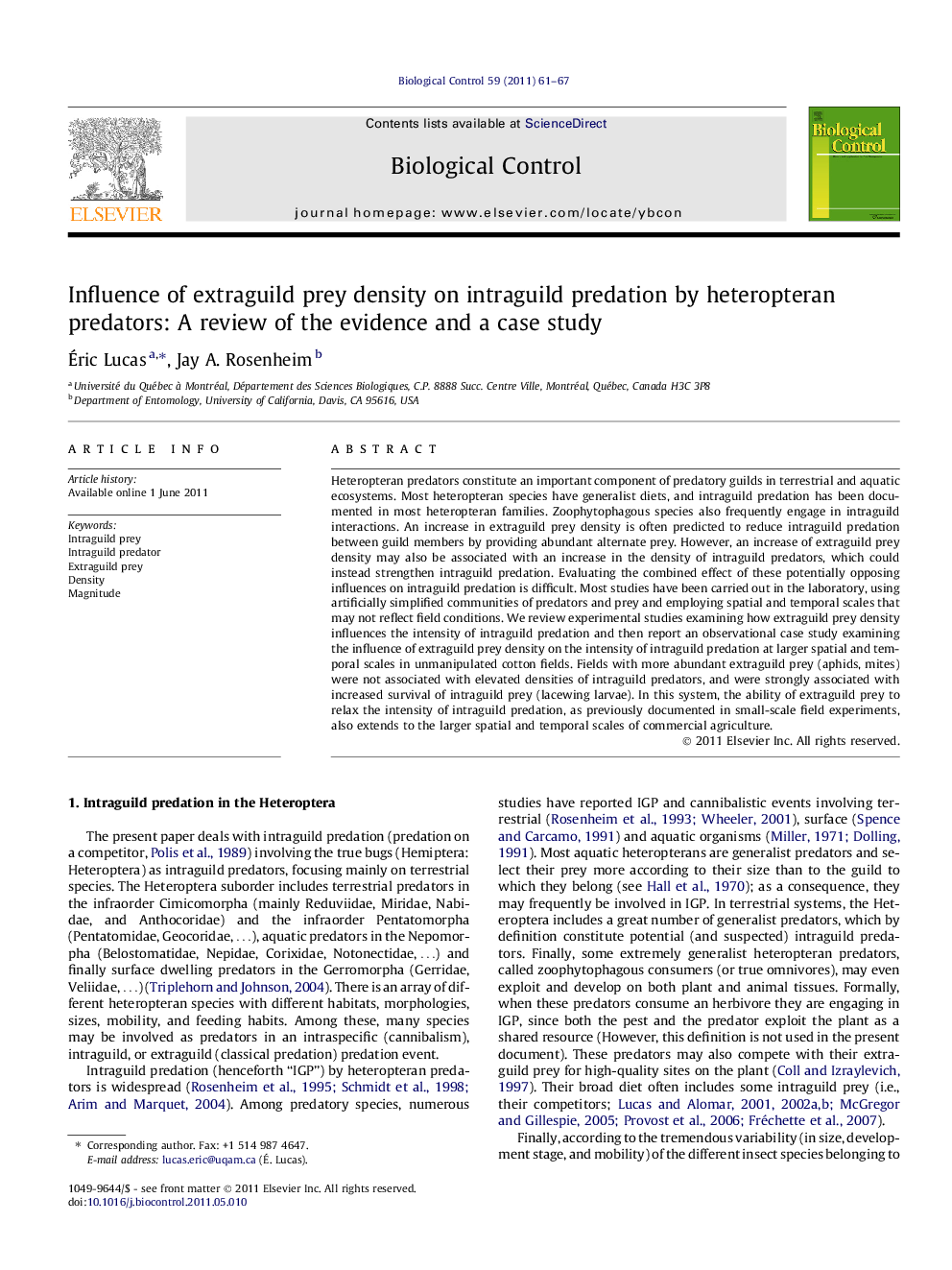| Article ID | Journal | Published Year | Pages | File Type |
|---|---|---|---|---|
| 4504184 | Biological Control | 2011 | 7 Pages |
Heteropteran predators constitute an important component of predatory guilds in terrestrial and aquatic ecosystems. Most heteropteran species have generalist diets, and intraguild predation has been documented in most heteropteran families. Zoophytophagous species also frequently engage in intraguild interactions. An increase in extraguild prey density is often predicted to reduce intraguild predation between guild members by providing abundant alternate prey. However, an increase of extraguild prey density may also be associated with an increase in the density of intraguild predators, which could instead strengthen intraguild predation. Evaluating the combined effect of these potentially opposing influences on intraguild predation is difficult. Most studies have been carried out in the laboratory, using artificially simplified communities of predators and prey and employing spatial and temporal scales that may not reflect field conditions. We review experimental studies examining how extraguild prey density influences the intensity of intraguild predation and then report an observational case study examining the influence of extraguild prey density on the intensity of intraguild predation at larger spatial and temporal scales in unmanipulated cotton fields. Fields with more abundant extraguild prey (aphids, mites) were not associated with elevated densities of intraguild predators, and were strongly associated with increased survival of intraguild prey (lacewing larvae). In this system, the ability of extraguild prey to relax the intensity of intraguild predation, as previously documented in small-scale field experiments, also extends to the larger spatial and temporal scales of commercial agriculture.
Graphical abstractFigure optionsDownload full-size imageDownload as PowerPoint slideHighlights► Most heteropteran predators engage frequently in intraguild predation. ► An increase in XGprey density is predicted to reduce IGP intensity. ► An increase in XGprey density is predicted to increase IGprey density. ► Most studies did not consider recruitment of IGpredators in IGP. ► In a reported field study, higher XGprey density increased survival of IGprey.
